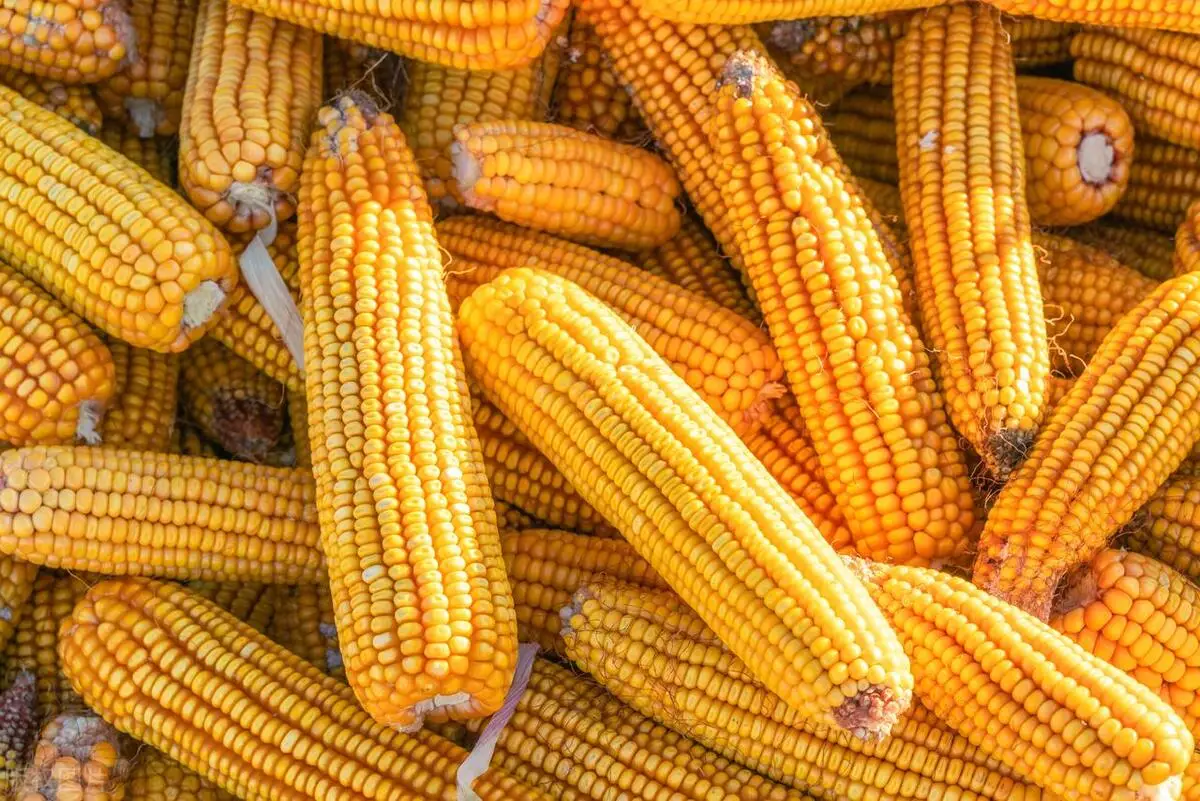
Corn
Viewpoint: The main premium for corn exists, and the short-term market is under pressure
In terms of domestic supply, the domestic corn production in 2024 was 299.417 million tons, an increase of 6.075 million tons or 2.10% compared to 2023. After the autumn harvest, there is sufficient supply of corn, and the selling pressure in the production area continues to exist. As of December 19th, the national corn sales progress is 38%, including 33% in Northeast China and 38% in North China, both at a faster level than in previous years. In addition, with the current temperature drop in Northeast and North China, the yield of corn has slowed down compared to the previous period, and prices have fluctuated.
In terms of demand, there is an expected increase in corn demand from breeding enterprises in the fourth quarter, and there is a need for feed and breeding enterprises to replenish inventory; At the same time, the number of processing enterprises starting up has increased, and the demand for processing has improved. In addition, China Grain Reserves Corporation has significantly increased its purchasing points in Northeast China, which provides support for grain prices.
Overall, this year's domestic corn production is confirmed to be high, and the negative yield is included in the market. The market will be mainly affected by rhythm factors in the future. The current temperature is dropping, the production of corn in the production area is decreasing, the national reserve is expanding and reducing the rotation of imported corn, and the purchase prices of processing enterprises are fluctuating. However, the current main corn premium exists, and the short-term market is under pressure.
Soybean meal
Viewpoint: Strong export support, US soybeans continue to rebound with continuous meal production
On the cost side, last week's net sales of US soybeans reached 1.424 million tons, which is in line with expectations, an increase of 21% compared to the previous week. In addition, there have been continuous large sales of US soybeans recently, and low prices have stimulated strong US soybean exports; At the same time, the recent decrease in rainfall in Argentina's soybean producing areas has weakened expectations for high soybean yields, jointly supporting the low-level rebound of US soybeans; However, the soybean producing areas in Brazil have abundant rainfall, and the expectation of high soybean yields in Brazil is still strong. In the short term, US soybeans will continue to fluctuate weakly.
Domestically, there has been sufficient imported soybeans arriving at the port recently, and the operating rate of oil plants has increased. The transaction and delivery of soybean meal are still acceptable, and soybean inventory has increased month on month, while soybean meal inventory continues to decline.
Overall, low prices stimulate the export and sales of US soybeans, and the weather in South American production areas has shown differentiation, leading to a rebound in US soybeans at a low level; Domestic oil factories are facing a continuous process of destocking soybeans and soybean meal, but soybean and soybean meal inventories are still sufficient; In the medium to long term, there is a strong expectation of high soybean yields in South America, and there is a continued expectation of a decline in the premium for Brazilian soybeans. In addition, short-term bullish speculation has ended, and it is recommended to short sell soybean meal at high prices.
palm oil
Viewpoint: Further digestion of the impact of slowing demand, short-term weak operation of palm oil
Last week, the center of gravity of soybean and palm oil shifted significantly downwards, while that of soybean and vegetable oil first suppressed and then rose.
Origin: On the first 20 days of December, the export of horse palm decreased by about 8%, and the production in the first half of the month decreased by 19.6%. The reference price for January crude palm has been raised to 5001.72 ringgit/ton.
Domestically, prices have fallen and downstream stocks are being stocked at low prices, resulting in an increase in weekly transactions of spot oils and fats.
Strategy: With the continuous consolidation of high yields in South America and unfavorable policy changes facing firewood, the global soybean industry is under pressure. Last week, CBOT soybean and soybean oil hit a new low in intraday trading, and soybean oil even hit a nearly 4-month low; However, as market sentiment digested, CBOT soybean recovered from its previous decline and even soybean oil stopped falling. Another rainstorm hit some areas in Malaysia, and the output of horse palm in December decreased by more than the trend level. However, with India's purchase slowing down after two consecutive months of replenishment, the export of horse palm in December declined, and there may be twists and turns in the implementation of Indonesia B40. The quotation of origin is loose, and the short-term market is enthusiastic to cool down. After the main force of horse palm moved to the month, it broke 4700-4600-4500 integer points, and the main force of horse palm broke 9000 integer points. In the stage of trading in the cuisine market, the trade relationship between Canada and Canada is still unclear, and vegetable oil is fluctuating at a high level. In terms of operation, the overall production area lacks support in the short term, with weak fluctuations in oil and fat. Palm oil has made up for the decline, and the price difference between soybean palm and vegetable palm has been restored again. It is recommended to take a wait-and-see approach and pay attention to the release of palm oil sentiment and the potential for correction.
White sugar
Viewpoint: The Northern Hemisphere's high yield suppresses the raw sugar market, continuing the 3-5 conventional approach
On a macro level, the Federal Reserve cut interest rates as scheduled but released a hawkish message, putting overall pressure on commodities. In the second half of November, the sugar production in central and southern Brazil was 1.084 million tons, a decrease of 325000 tons from 1.409 million tons in the same period last year, a year-on-year decrease of 23.06%. The cumulative sugar production was 39.361 million tons, a decrease of 1.521 million tons from 40.882 million tons in the same period last year, a year-on-year decrease of 3.72%. The expected reduction in production in Brazil this season compared to the previous season has been realized on the market. The large amount of exports in the early stage has led to a low inventory in Brazil, and the export volume will be limited in the later stage. Before the northern hemisphere fills the global supply, the raw sugar market has also shown a clear back structure of near high and far low.
On the Indian side, according to data released by the National Cooperative Sugar Refinery Federation (NFCSF), as of December 15, 2024, the 2024/25 crushing season produced 6.085 million tons of sugar, a decrease of 1.335 million tons or 18% from 7.42 million tons in the same period last year. India's squeezing has been delayed for about a month this year, and the squeezing progress has accelerated recently, narrowing the year-on-year decline in production.
As of December 15th, Thailand has compressed a total of 4.47 million tons of sugarcane, an increase of 87% year-on-year, and produced 349200 tons of sugar, an increase of 142% year-on-year.
Domestically, according to data from the General Administration of Customs, in November 2024, China imported 220400 tons of syrup and white sugar premix powder (tariff code 170290), an increase of 90700 tons year-on-year, with a growth rate of 69.84%. As of November in the 2024/25 crushing season, the cumulative import of 445300 tons nationwide has increased by 150000 tons year-on-year, with a growth rate of 50.78%.
Strategy: Brazil's sugar production has rebounded in the first half of December, and the market expects final production to return to above 40 million tons. The northern hemisphere will start squeezing, India's year-on-year decline in production will narrow, Thailand's production expectations will strengthen, and raw sugar will continue to weaken and decline. Zhengzhou Sugar is relatively resistant to decline, and operations will still focus on 3-5 sets.


 Back
Back